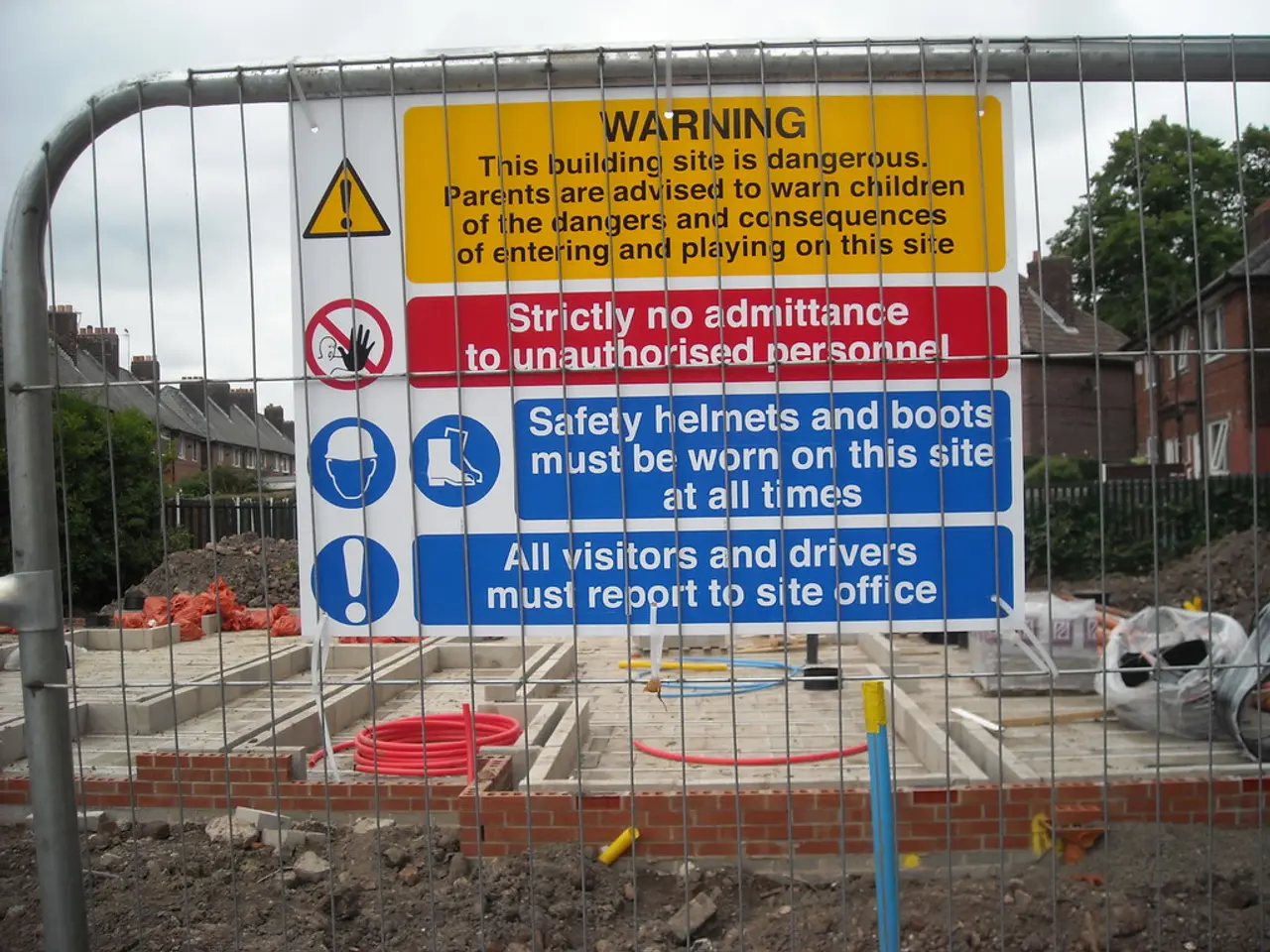Thinking of purchasing a house without adhering to building codes? Here's what you need to know.
Buying a House in the UK Without Building Regulations Approval: Potential Risks and Implications
Buying a house in the UK without the necessary building regulations approval can lead to various legal, financial, and resale implications. Here's what you need to know.
Firstly, if building work has been carried out without approval, you may face enforcement action from the local authority. This could require you to alter or remove non-compliant work, which can be costly and disruptive. In extreme cases, there is a risk of prosecution, unlimited fines, and a criminal record if you knowingly contravene building regulations [4].
Secondly, when selling the property, you may encounter difficulties proving compliance. Solicitors, surveyors, and mortgage lenders often require evidence in the form of completion certificates or building regulations approval. Without this, buyers may pull out or ask for price reductions, lowering the property's value [2].
Moreover, you cannot legally market or use parts of the property as habitable rooms if they were not approved. This can impact the value and usability of the property [2].
Retrospective approval is possible but often requires invasive inspections and remedial works to bring the structure up to standard, adding expense and delay [4].
Buyers or mortgage lenders may insist on building regulations indemnity insurance to cover legal risks from unauthorized work. This insurance protects against enforcement costs but not costs to fix or improve the work [5]. It usually costs a few hundred pounds and can aid in completing a sale despite missing paperwork.
Under the Building Safety Act 2022 and related reforms, regulatory oversight and penalties for non-compliance have been strengthened, making compliance increasingly important for homeowners and developers [1].
Safety and the overall quality of the structure/installation remain a concern that an indemnity policy cannot resolve. Therefore, it's advisable to call in qualified individuals or companies to check the work before purchasing. This can enable renegotiating the purchase price according to what remedial work might cost.
If a suspected breach of building regulations is found during the conveyancing process, it's important to obtain an indemnity policy from the seller if the breach is less than 10 years old and ensure the policy limit covers any increase in value to the property.
In summary, purchasing and owning a property with building works completed without building regulations approval exposes you to costly enforcement, potential legal penalties, reduced marketability, and possibly the need for insurance or expensive remedial work to secure retrospective approval [2][4][5].
- Without building regulations approval, you might experience enforcement action from local authorities, requiring alterations or removal of non-compliant work.
- Proving compliance can be difficult when selling a property, which may lead to buyer withdrawal or price reductions, negatively affecting the property's value.
- You cannot legally use or market parts of the property as habitable rooms without approved plans.
- Retrospective approval often involves invasive inspections, remedial works, and additional costs.
- Buyers or mortgage lenders may require building regulations indemnity insurance to cover legal risks from unauthorized work, usually costing a few hundred pounds.
- The Building Safety Act 2022 and related reforms have tightened regulatory oversight and penalties for non-compliance.
- To ensure safety and quality, qualified individuals or companies should inspect work before purchasing a property.
- Renegotiating the purchase price according to remedial work costs can be possible when issues are found before the sale.
- If a suspected breach of building regulations is found during the conveyancing process, an indemnity policy from the seller should be obtained.
- Ensuring the indemnity policy limit covers any increase in value to the property is crucial when the breach is less than 10 years old to cover potential costs and risks associated with non-compliance in home-and-garden and real-estate investments.





